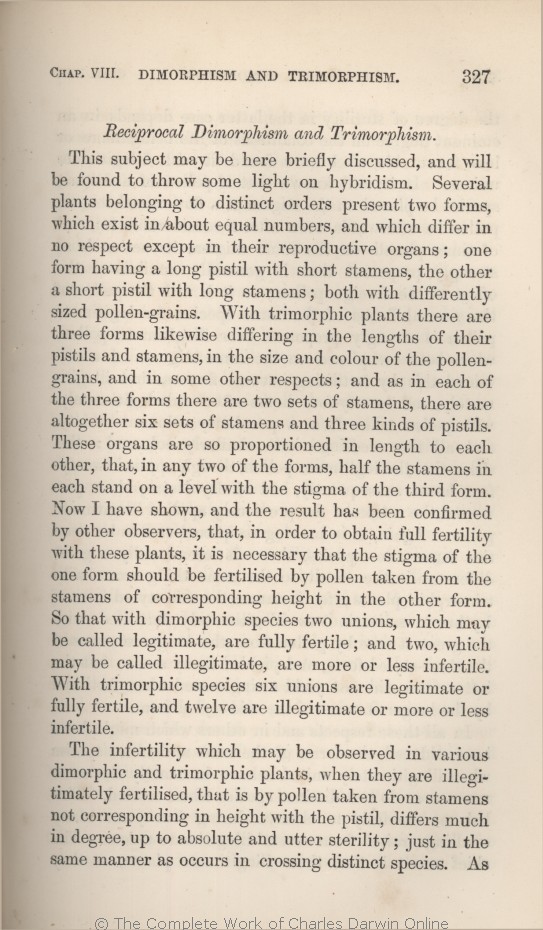| Reciprocal
Dimorphism
and
Trimorphism
. |
This subject may be here briefly discussed, and will be found to throw
some | some 1869 1872 | | considerable 1866 |
| which exist 1869 1872 | | existing together 1866 |
| numbers, 1866 1869 | | numbers 1872 |
| and which 1869 1872 | | which 1866 |
| both with 1866 1869 |
| the two having 1872 |
| there are 1866 1869 |
| the three forms possess 1872 |
| in any 1866 1869 |
| half the stamens in 1872 |
| forms, 1866 1869 | | forms 1872 |
| half the stamens in each 1866 1869 |
| OMIT 1872 |
| other 1866 1869 | | another 1872 |
| fertile; 1869 1872 | | fertile, 1866 |
|
|
| The infertility which may be observed in various dimorphic and trimorphic plants, when they are illegitimately fertilised, that is by pollen taken from stamens not corresponding in height with the pistil, differs much in degree, up to absolute and utter sterility; just in the same manner as occurs in crossing distinct species. As
|









